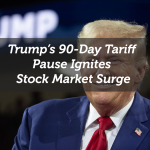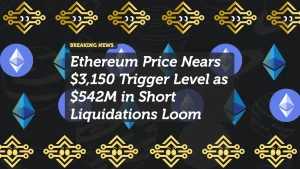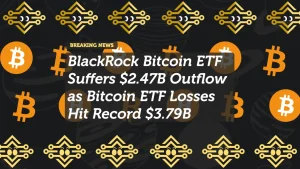
Standard Chartered Predicts Bitcoin at $200,000, Ethereum at $10,000 by 2025
In November 2024, Standard Chartered released a forecast that turned heads across both traditional finance and the crypto world. The bank predicted that Bitcoin could reach $200,000 and Ethereum could hit $10,000 by the end of 2025. Perhaps even more strikingly, the firm projected that the total digital asset market capitalization could quadruple to $10 trillion by late 2026.
These projections reflect growing optimism about cryptocurrency adoption and institutional investment—along with shifting global policy trends that may favor digital asset innovation.
Let’s break down what’s fueling this ambitious forecast.
Why the Bullish Outlook? Key Drivers Explained
1. Political and Regulatory Momentum
Standard Chartered analysts suggested that a Republican victory in the 2024 U.S. elections would likely result in a more crypto-friendly regulatory framework, which could serve as a tailwind for the entire market.
- Lower regulatory friction would encourage startups, exchanges, and investors to scale up activity in the U.S.
- Increased clarity on stablecoins, token classification, and DeFi could reduce legal risks for major institutions.
This projected regulatory easing was seen as crucial to opening the floodgates for traditional capital.
2. Institutional Investment at Scale
One of the most critical factors in the forecast is the anticipated rise in institutional adoption, particularly from pension funds and large asset managers.
- Firms managing trillions in traditional assets are gradually moving into crypto, starting with spot Bitcoin and Ethereum ETFs.
- Standard Chartered noted that pension funds—typically conservative and slow-moving—are increasingly allocating to digital assets as part of diversified long-term strategies.
This kind of inflow could inject hundreds of billions of dollars into the crypto space over the next two years.
3. Spot ETFs and Financial Products
The launch and success of spot Bitcoin and Ethereum ETFs in major markets, especially in the United States and Europe, was cited as a major catalyst.
These products:
- Allow investors to gain direct exposure to crypto without managing wallets or keys.
- Attract institutional capital that is otherwise restricted from investing in unregulated crypto platforms.
- Boost market liquidity, reduce volatility, and improve price discovery.
The bank’s analysts believe ETFs will act as an accelerator for mainstream adoption, just as gold ETFs helped spark a rally in precious metals in the early 2000s.
Market Dynamics and Sector Insights
Bitcoin’s Role: A Safe-Haven Asset in Transition
While Bitcoin is expected to lead the rally, Standard Chartered sees its market dominance dropping from 60% to 40% by 2026.
Why?
- As the crypto ecosystem matures, investors may diversify into Layer-1 platforms, DeFi, and tokenized real-world assets.
- Bitcoin ETFs may still dominate inflows, but the rest of the market is expected to grow faster, eating into Bitcoin’s share.
Ethereum: Institutional Utility Meets Growth Potential
Ethereum’s projected rise to $10,000 is based on its status as the most widely used blockchain for smart contracts and DeFi.
- Its transition to proof-of-stake has made it more sustainable and cost-efficient.
- The launch of Ethereum-based ETFs and Layer-2 rollups has strengthened scalability and reduced transaction fees.
- Ethereum’s real-world use cases in tokenization, finance, and decentralized applications position it well for institutional interest.
Altcoins: Use Case Will Be King
While the forecast focused heavily on Bitcoin and Ethereum, the bank also gave a nod to high-utility altcoins.
- Solana (SOL) was specifically highlighted as a token that could outperform due to its high transaction speed, growing DeFi ecosystem, and retail traction.
- Other projects with strong infrastructure and developer ecosystems, such as Avalanche, Cosmos, and Polkadot, may also benefit.
The $10 Trillion Market Cap: How Could It Happen?
To put this in perspective:
- As of late 2024, the entire crypto market capitalization stood at roughly $2.5 trillion.
- A fourfold increase would require substantial new capital inflows, institutional adoption, and stable macroeconomic conditions.
Standard Chartered’s roadmap to $10 trillion includes:
- Broader access to regulated crypto products
- Increasing tokenization of real-world assets (real estate, bonds, stocks)
- Integration of crypto into traditional financial systems
- Adoption of central bank digital currencies (CBDCs) that operate alongside decentralized assets
Potential Risks and Challenges
While the projections are optimistic, Standard Chartered did highlight potential headwinds:
- Regulatory setbacks, particularly in large markets like the U.S. or EU
- Cybersecurity incidents or major exchange collapses
- Over-leveraged trading leading to systemic risk
- Macroeconomic turbulence, including interest rate hikes or recession fears
Volatility remains a core part of the crypto landscape—and any of these challenges could derail the bullish narrative.
Final Thoughts: Ambitious but Grounded
Standard Chartered’s forecast of Bitcoin at $200,000 and Ethereum at $10,000 by the end of 2025 may seem bold—but it’s not without merit. The assumptions hinge on a supportive policy environment, explosive institutional interest, and successful rollout of financial infrastructure like ETFs and tokenized assets.
Whether or not the crypto market reaches a $10 trillion cap by 2026, the bank’s outlook reflects growing belief in the long-term viability of digital assets.
















